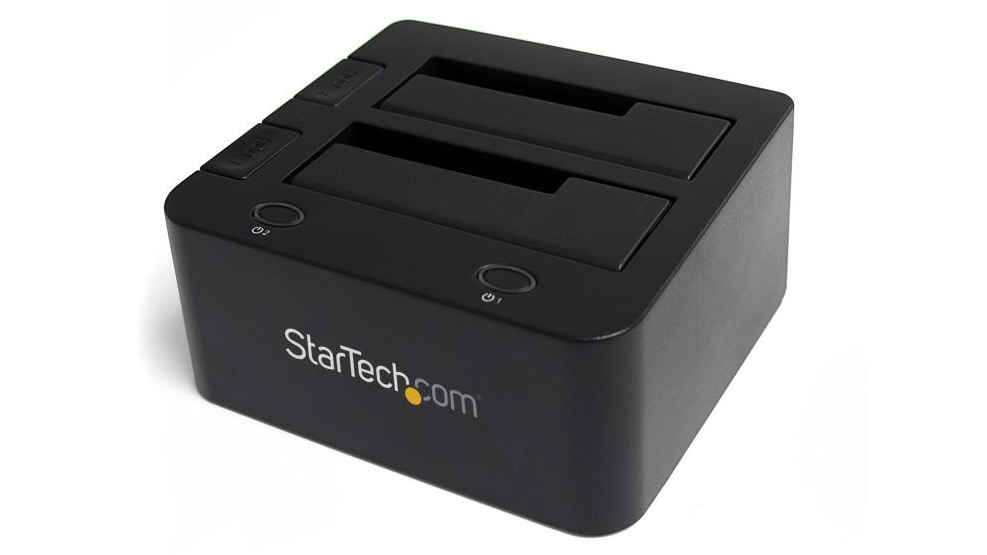TechRadar Verdict
Pros
- +
USB 3.0
- +
Easy to use
- +
Space saving
Cons
- -
No clone button
Why you can trust TechRadar
Throughout the years you've probably accumulated a number of hard drives. Rather than leaving them to lay about gathering dust - or risk your data security by throwing them away - you can quickly and easily turn them into external hard drives with this top-loading dock, the StarTech.com USB 3.0 to SATA IDE HDD Docking Station.
Inserting the drives into the bays much like you would bread into a toaster is quick and trouble-free, and the dock makes use of the high speeds of USB 3.0 to make these drives a viable back-up solution.
What makes the StarTech.com USB 3.0 to SATA IDE HDD Docking Station stand out from other docking stations is that while one dock uses the SATA hard drive interface - which all new hard drives use - the other dock uses the older IDE interface.
This gives the StarTech.com UNIDOCK3UGB a versatility lacking in SATA-only docks, since you're probably more likely to have an old IDE hard drive knocking about - but in the future you'll likely have a spare SATA hard drive as well.
Adding and removing hard drives - especially SATA drives - is very easy, and they show up straight away on your PC.
Verdict
If you have a combination of SATA and IDE drives lying about, then this is a great way to turn them into external hard drives. Another great use for this is copying data from an old IDE drive into a new SATA drive quickly and easily.

Matt is TechRadar's Managing Editor for Core Tech, looking after computing and mobile technology. Having written for a number of publications such as PC Plus, PC Format, T3 and Linux Format, there's no aspect of technology that Matt isn't passionate about, especially computing and PC gaming. He’s personally reviewed and used most of the laptops in our best laptops guide - and since joining TechRadar in 2014, he's reviewed over 250 laptops and computing accessories personally.
